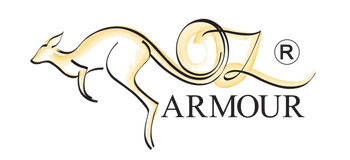Les fausses teignes représentent une menace importante pour les apiculteurs, causant des dégâts considérables aux ruches si elles ne sont pas traitées. Comprendre comment prévenir les dommages causés par ces insectes est essentiel pour maintenir des colonies d'abeilles en bonne santé. Ce guide vous présente les meilleures pratiques pour identifier, prévenir et gérer les infestations de fausses teignes.
Comprendre les mites de cire
Cycle de vie de la teigne de la cire
Teignes de la cire Les papillons passent par plusieurs stades de leur cycle de vie, chacun pouvant nuire à votre ruche. Le cycle de vie commence par la ponte d'œufs dans la ruche par une femelle adulte. Une fois écloses, les larves creusent des galeries dans les rayons, se nourrissant de cire, de pollen et d'autres débris de la ruche. Ces galeries endommagent la structure des rayons et fragilisent la ruche.
Types de mites de cire
Il existe deux principaux types de fausses teignes de la cire que les apiculteurs doivent connaître : la grande fausse teigne et la petite fausse teigne. La grande fausse teigne est plus grande et plus destructrice, tandis que la petite fausse teigne, bien que plus petite, peut néanmoins causer des dégâts importants. Comprendre les caractéristiques et les comportements de chaque type peut faciliter l'identification et la prévention précoces.
Identifier les infestations de teignes de la cire
Signes d'infestation par les mites de la cire
Une détection précoce est essentielle pour prévenir des dégâts importants. Recherchez des signes tels que des toiles dans les rayons, des galeries dans la cire et de petites larves rampant sur les cadres. Vous pourriez également remarquer une odeur désagréable émanant de la ruche. Les colonies faibles sont particulièrement vulnérables, car leur population n'est pas suffisamment nombreuse pour repousser ces envahisseurs.
Inspection des ruches à la recherche de teignes de la cire
Des inspections régulières des ruches sont essentielles pour détecter rapidement les infestations de fausses teignes. Lors de ces inspections, vérifiez soigneusement les coins et les fissures de la ruche où les larves pourraient se cacher. Utilisez des outils comme une lampe de poche pour mieux visualiser les sites d'infestation potentiels. Une surveillance constante permet d'intervenir rapidement et d'éviter que les larves ne causent des dégâts importants.
Mesures préventives
Maintenir la propreté de la ruche
Maintenir la propreté de votre ruche est l'un des moyens les plus efficaces de prévenir les infestations de fausses teignes. Retirez régulièrement les vieux rayons et remplacez-les par des neufs. Veillez à nettoyer rapidement tous les débris de la ruche, car ils peuvent attirer les fausses teignes. Maintenir la propreté de la ruche réduit les chances que les larves trouvent un environnement propice à leur développement.
Utilisation de pièges à mites de cire
Les pièges à fausses teignes peuvent être utiles pour lutter contre ces nuisibles. Il existe différents types de pièges, comme les pièges à phéromones qui attirent et capturent les teignes adultes. Installez des pièges autour de votre rucher et surveillez-les régulièrement. Les pièges sont particulièrement utiles pendant les périodes de forte activité des fausses teignes, offrant une protection supplémentaire.
Stockage approprié du matériel apicole
Un stockage adéquat du matériel apicole est essentiel pour prévenir les dommages causés par la fausse teigne. Conservez les rayons et les cadres non utilisés dans un endroit frais et sec. Pensez à congeler les rayons avant de les ranger pour tuer les œufs et les larves de fausse teigne. L'utilisation de contenants hermétiques peut également contribuer à protéger le matériel stocké des infestations.
Méthodes de contrôle biologique et chimique
Options de contrôle biologique
La lutte biologique consiste à utiliser des prédateurs naturels ou des organismes bénéfiques pour contrôler les populations de fausses teignes de la cire. L'introduction de prédateurs, comme les coléoptères prédateurs, peut contribuer à réduire les larves de fausses teignes.Cette méthode est respectueuse de l’environnement et contribue à maintenir l’équilibre écologique au sein de votre rucher.
Traitements chimiques sûrs
Lorsque les infestations deviennent graves, des traitements chimiques peuvent s'avérer nécessaires. Utilisez des acaricides approuvés et suivez attentivement les instructions du fabricant. Bien qu'efficaces, il est essentiel de s'assurer que les résidus chimiques ne contaminent pas le miel et ne nuisent pas aux abeilles. Optez toujours pour des traitements respectueux de l'environnement et de votre colonie.
Gestion des dommages causés par la teigne de la cire
Réparation des dommages causés par les mites de la cire
Si vous détectez des dégâts causés par la fausse teigne, agissez rapidement pour les réparer. Retirez les rayons affectés et remplacez-les par des rayons sains. Nettoyez soigneusement les cadres pour éliminer les larves et les œufs restants. Un entretien régulier contribue à restaurer la structure de la ruche et à prévenir d'autres dommages.
Renforcer les colonies d'abeilles
Une colonie d'abeilles vigoureuse est moins susceptible d'être infestée par la fausse teigne. Assurez-vous que vos abeilles ont accès à une alimentation adéquate et maintenez une population saine. Surveillez régulièrement la santé de la ruche et prenez des mesures pour renforcer la colonie, comme un apport complémentaire en période de soudure.

Collection de combinaisons et de gants d'apiculture OZ Armour
En plus de gérer les dommages causés par la teigne de la cire, il est essentiel d’assurer la sécurité et le confort des apiculteurs. Armure OZ propose une collection premium de "Combinaison d'apiculture et Gants d'apicultureConçus pour une protection maximale, nos combinaisons et gants d'apiculture offrent une protection efficace contre les piqûres d'abeilles tout en permettant une liberté de mouvement optimale lors des inspections des ruches et de la récolte du miel. Fabriqués à partir de matériaux durables et respirants, nos combinaisons et gants garantissent confort et protection aux apiculteurs. Que vous soyez apiculteur chevronné ou débutant, la collection OZ Armour répond à vos besoins, garantissant votre sécurité et améliorant votre expérience apicole.
Conclusion
Prévenir les dommages causés par les fausses teignes de la cire est essentiel au maintien de colonies d'abeilles en bonne santé. En comprenant le cycle de vie des fausses teignes, en identifiant précocement les infestations et en mettant en œuvre des mesures préventives telles que le maintien de la propreté des ruches, l'utilisation de pièges à fausses teignes et un stockage adéquat du matériel apicole, les apiculteurs peuvent protéger leurs ruches. Combiner des méthodes de lutte biologique à des traitements chimiques sûrs, si nécessaire, garantit une gestion complète des fausses teignes. De plus, l'utilisation des combinaisons et des gants d'apiculteur OZ Armour offre une protection et un confort essentiels, permettant aux apiculteurs de gérer leurs ruches en toute confiance. Grâce à ces bonnes pratiques, les apiculteurs peuvent maintenir des colonies prospères et garantir une expérience apicole productive.












